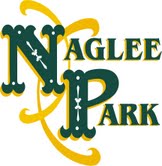Naglee Park History
Naglee Park is a residential subdivision located in the heart of Santa Clara Valley. The area was developed on the estate of California pioneer Brigadier General Henry Morris Naglee and is considered the first modern subdivision in Santa Clara County. Naglee first laid claim to the property in 1847 and later built his country home on 140 acres of his property. His magnificent gardens were open to the public and his estate was known as Naglee Park. There is a statue commemorating Naglee and his achievements in St. James Park.
Naglee Park, the modern residential subdivision, covers the area historically known as Naglee Park, the private estate. The estate boundaries are Santa Clara Street on the north, Coyote Creek on the east, William Street on the south and 11th Street on the west. The entrance to the estate was located at 11th and San Fernando. There was a service entrance from Santa Clara along what is now 15th Street.
The Naglee mansion still exists; it is located at the corner of 14th and San Fernando Streets. The Naglee mansion in San Jose is the only remaining Naglee home in existence. His other residences included a suite in San Francisco at the Occidental Hotel, a 30,000 acre rancho near Stockton and a residence near his Philadelphia birthplace.
Brig. Gen. Henry Morris Naglee (1815-1886) is noted in California history for his contributions to the banking and viticulture industries. He was born in Philadelphia, graduated from the United States Military Academy at West Point, and served in both the Mexican War and the Civil War. He married at the age of 50; his bride was half his age. Marie Antoinette Ringgold was the socially prominent daughter of another West Point graduate and a descendent of President James Monroe. There were two daughters from this marriage.
Naglee died in 1886 and the provisions of his will prevented his Naglee Park estate from being subdivided until his youngest daughter reached the age of 30. About fifteen years after his death, Naglee’s two daughters and their husbands formed a small development company to subdivide and sell Naglee Park. This company, known as Naglee Park Improvement Corporation (NPICo), was incorporated in Arizona in 1901 with business offices in San Francisco. The local agent for sales and marketing was real estate developer T. S. Montgomery.
San Jose was booming at the turn of the century and the areas around Naglee Park were already developed. Across Coyote Creek, the little town of East San Jose was a thriving community. A street car line had been in operation along Santa Clara Street for decades, running as far east as Alum Rock Park. Naglee Park was the last large, landscaped area adjacent to Downtown San Jose and was a highly desirable location.
By the spring of 1902, NPICo was ready to begin sales and marketing. Naglee Park was developed in four stages; the first subdivision map was filed in the spring of 1902. The initial offering included properties only in the first two blocks near Santa Clara Street. See The Oldest House in Naglee Park to learn more about these early owners and their homes. The second tract map was filed in 1905 and included land between San Antonio and San Carlos Streets. Naglee Park development slowed a bit after the 1906 earthquake when many contractors were making repairs and working on larger projects. The third and fourth Naglee Park subdivision maps were filed in 1907 and 1908. By 1910, all of the approximately 600 lots had been sold and NPICo was disbanded. Naglee Park was so popular that it helped push the areas south of William Street to development also.
Naglee Park is the first local subdivision developed and marketed as we understand development today. The concept was unique on the West Coast at the time and it was quickly imitated. Naglee Park was developed as a complete neighborhood with paved streets, gas lines, water service and sewers already installed. Utility easements are on rear lot lines to hide unsightly wires. There were restrictive covenants that specified houses costing less than $2,000 could not be built in Naglee Park. Business construction was prohibited as well as barns and stables, uses that were both a fire hazard and unsanitary.
Early Naglee Park residents acquired a lot from NPICo and then contracted with a local architect or builder to design and construct a home to suit their personal needs. Naglee Park houses reflect the talents of many early California architects and the neighborhood features a variety of the Classic Revival and Craftsman styles that were becoming popular at the time. The most prolific design firm represented in Naglee Park was Wolfe & McKenzie and both architects were Naglee Park residents.
Naglee Park was developing just as the automobile was coming of age. Early residents of Naglee Park were predominantly local business owners and professional people who bought an automobile as soon as it became practical. Garages on the north side of Naglee Park were built some time after the house was completed; garages on the south side of Naglee Park, where the houses were built a few years later, had garages built to match their homes.
Because Naglee Park attracted many residents who were prominent business owners and community leaders, and because the architecture of many homes is unique, Naglee Park has many houses with historic significance. The Naglee Park Historic Inventory project is developing documentation to add homes to San Jose’s official list of historic structures. See Historic Inventory for more information about researching your own home.
Jack Douglas, a Naglee Park resident and historian, has written a book about Naglee Park and many of its notable residents (Tales of Naglee Park). This book is available at local libraries or available for purchase by emailing treasurer@nagleepark.org.
April Halberstadt
August 2009

